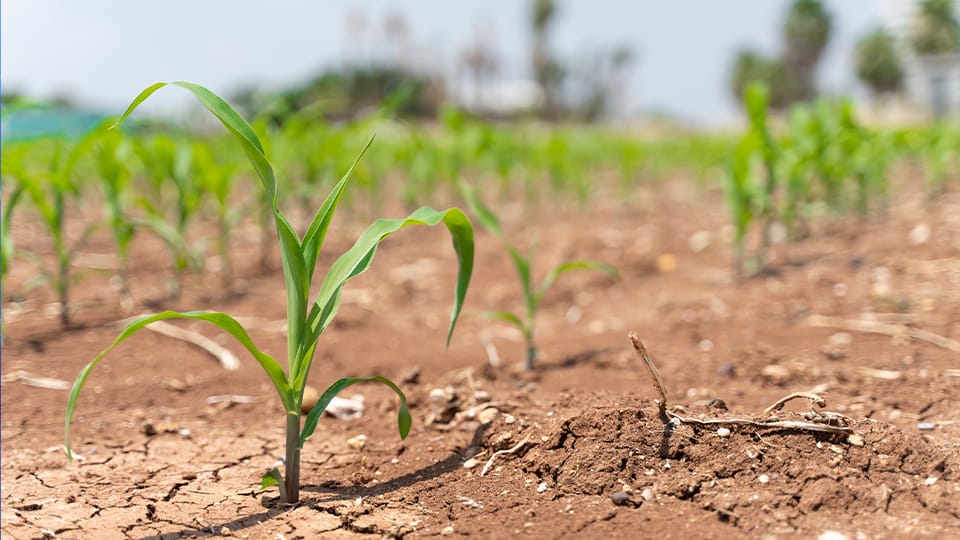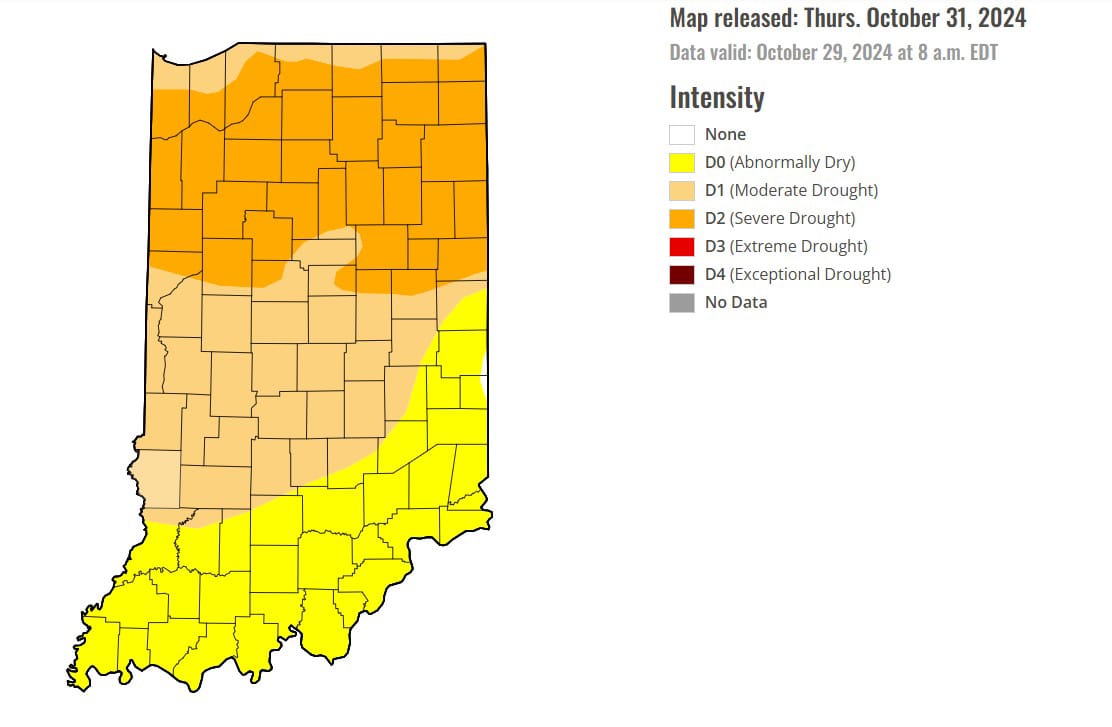Drought conditions cover a record swath of the U.S.
Subscriber Benefit
As a subscriber you can listen to articles at work, in the car, or while you work out. Subscribe Now
Conditions ranging from abnormally dry to various levels of drought covered a record portion of the Lower 48, according to the latest update from the U.S. Drought Monitor. A remarkable 87% of the country had fallen into dry or drought conditions as of Oct. 31. And as a weather pattern shift continues, a swath of the central United States will remain in a transition from drought to flood concerns this week and beyond.
The recent record drought surpassed prior high marks of 85% in early November 2022 and 80% in July 2012. Statistics from the U.S. Drought Monitor, a partnership between the federal government and the University of Nebraska at Lincoln, date to 2000.
In Indiana, all 92 counties are under some form of drought advisory. The majority of the northern part of the state is experiencing severe drought conditions.

Recent expansion of the drought was boosted by a historically dry October in the contiguous United States, a pattern that started shifting wetter in the central part of the country as the month closed and November began.
Multiple rounds of heavy rain and severe weather over the past week indicate the peak of drought conditions is passing. Another soaking and an elevated tornado threat is on the way Monday after several days of similar weather centered in Oklahoma.
Record dry, but probably around its peak
The 87%of the United States in abnormally dry or drought conditions as of the most recent weekly update was nearly a doubling of area covered since late June – when the value was 45%.
Drought conditions were observed from coast to coast, with widespread drought present across the central United States at the end of October.
One epicenter, a big chunk of the southern Plains region, was under moderate to severe drought, Levels 2 and 3 out of 5. Substantial rain has since fallen in some of these areas, which will likely lead to a decrease in the dry and drought percentage going forward.
Additional rain is anticipated in much of the central United States this week.
A drought outlook for November shows a large zone of improvement from Texas to the Great Lakes, while dry conditions persist or grow in parts of the eastern United States.
Rapid increase of dryness in recent weeks
Rapidly increasing dryness has been common since summer. There have been a few intermissions – such as the historic flooding from Hurricane Helene – but there has been a persistently parched weather pattern overall.
October ended up among the driest months on record for the Lower 48, with much of the east seeing little to no rain. This run of extraordinary dryness catapulted the year to the top of the list for coverage of dry and drought since 2000.
As recently as last week, large wildfires raged in Oklahoma, Nebraska and other portions of the southern and central Plains, the blazes pushed along by increasing winds of a changing season.
Now, some of these same areas are under flood watches after heavy rain in recent days.
What to know about the current weather pattern
The latest barrage of storm systems pushing from the northwestern to the central United States is a change from recent conditions.
Over the past few weeks, the center of the driest air mass has pivoted east, where it’s delivering record spells without rain near the coast. Signals indicate that the weather pattern causing a stormier western and central United States, with a drier eastern United States could linger a while.
Drought is notorious for ending with a flood, as it often takes copious moisture to break a lengthy dry spell.
But the quickflips between intense rounds of dry and wet are being exacerbated by human-caused climate change, according to scientists. It is also thought that weather pattern stagnation is increasing under a changing climate.
What to know about conditions ahead
A La Niña climate pattern has yet to develop, but it continues to be forecast for the winter season. The climate pattern, defined by cooler-than-normal water in the equatorial Pacific Ocean, augments weather patterns globally, particularly during the Northern Hemisphere’s winter.
It’s unlikely the current weather pattern will be sustained through the cold season, but the recent configuration is one that is common to La Niña winters. They tend to have a dip in the jet stream over the northwest United States and high pressure off the East Coast.
This often means conditions that are cooler than normal in the storm-impacted areas of the west or north and warmer than normal conditions in the east. In between, there will be a corridor where storms will roam – including springlike severe weather in the South.
The area where those storms develop occasionally changes, but it is why La Niña winters are often warmer and drier than normal in the southern United States and much of the east, while winter’s worst effects are typically confined toward the northern tier.
Over the next several weeks to months, the Weather Service predicts sustained zones of above average precipitation for the Northwest and much of the central United States, with dry conditions more likely in the Northeast. Atypical warmth is also expected in the east.
